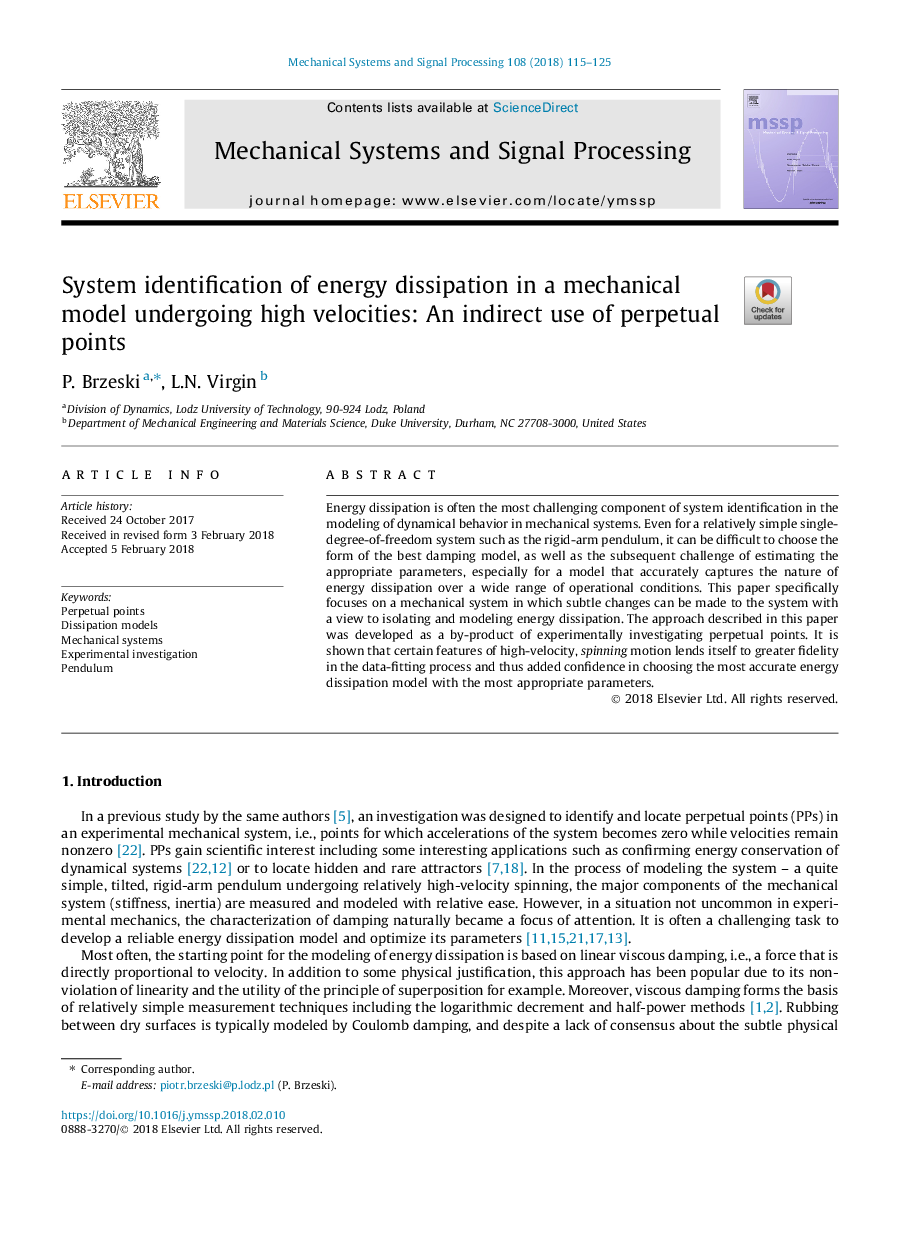| Article ID | Journal | Published Year | Pages | File Type |
|---|---|---|---|---|
| 6954148 | Mechanical Systems and Signal Processing | 2018 | 11 Pages |
Abstract
Energy dissipation is often the most challenging component of system identification in the modeling of dynamical behavior in mechanical systems. Even for a relatively simple single-degree-of-freedom system such as the rigid-arm pendulum, it can be difficult to choose the form of the best damping model, as well as the subsequent challenge of estimating the appropriate parameters, especially for a model that accurately captures the nature of energy dissipation over a wide range of operational conditions. This paper specifically focuses on a mechanical system in which subtle changes can be made to the system with a view to isolating and modeling energy dissipation. The approach described in this paper was developed as a by-product of experimentally investigating perpetual points. It is shown that certain features of high-velocity, spinning motion lends itself to greater fidelity in the data-fitting process and thus added confidence in choosing the most accurate energy dissipation model with the most appropriate parameters.
Related Topics
Physical Sciences and Engineering
Computer Science
Signal Processing
Authors
P. Brzeski, L.N. Virgin,
